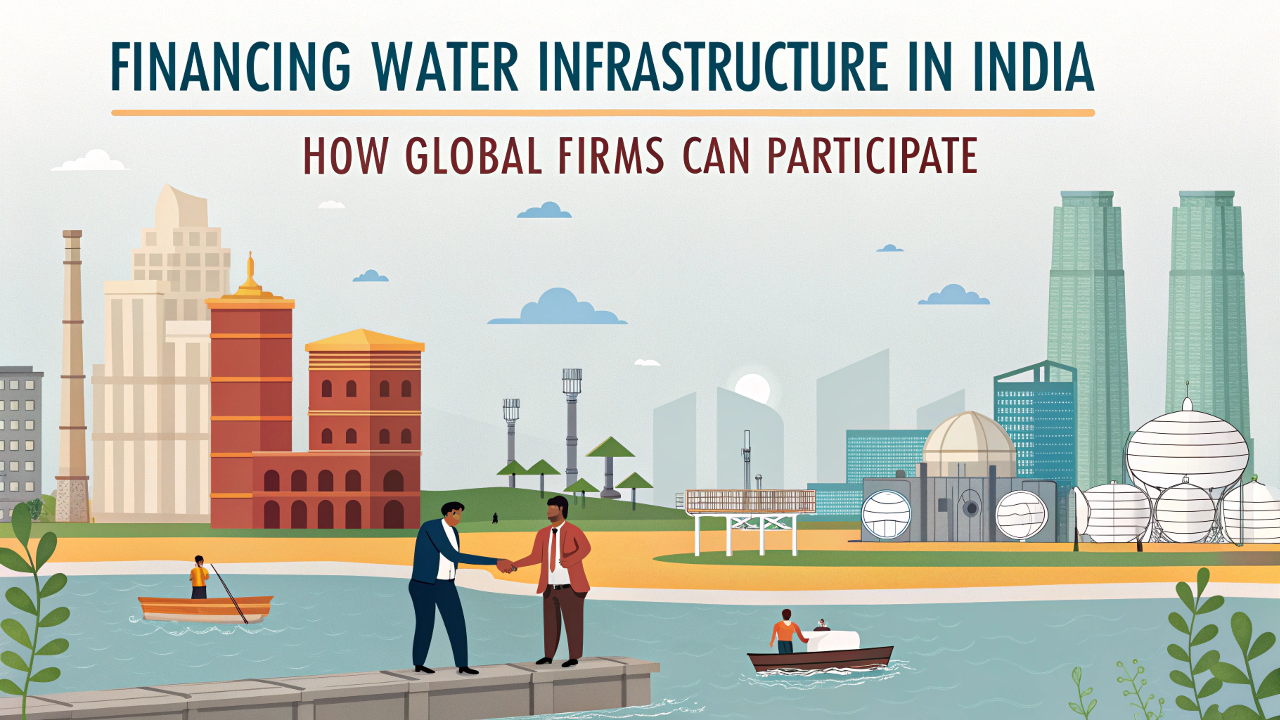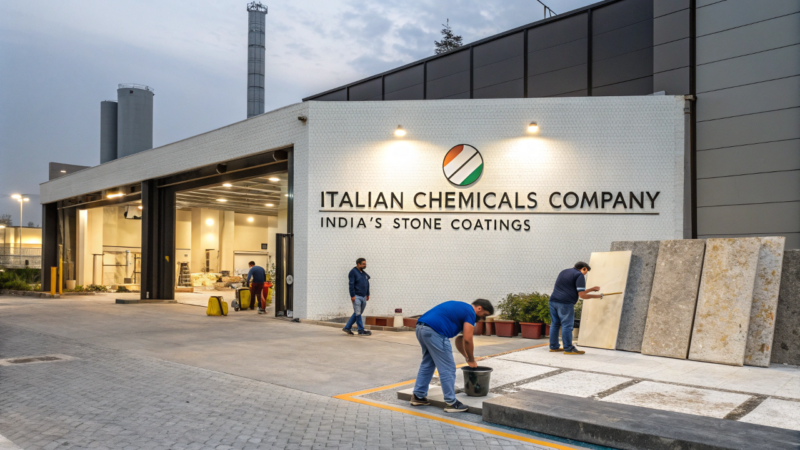
Introduction
India’s water infrastructure requires more than $500 billion in investment, prompting global investors and financial institutions to seek opportunities in key areas like water supply, wastewater treatment, desalination, and smart water management projects.
The Indian government is actively promoting Public-Private Partnerships (PPP), Foreign Direct Investment (FDI), municipal bonds, and green financing to attract both domestic and international investments. The increasing urbanization, industrialization, and climate change challenges have heightened the need for resilient, sustainable water infrastructure. This blog explores India’s water financing landscape, key funding mechanisms, investment opportunities, and challenges for international investors.
Why Financing is Critical for India’s Water Sector
1. Massive Investment Demand
- India’s water infrastructure needs exceed $500 billion by 2030 (NITI Aayog, 2024).
- Jal Jeevan Mission (₹3.6 trillion) aims to provide tap water connections to 191 million rural households by 2024.
- Smart Cities Mission (₹48,000 crore) focuses on urban water & wastewater projects, including smart metering and leak detection.
- National River Conservation Plan (NRCP), with an investment of ₹30,000 crore, is focused on river rejuvenation and wastewater treatment.
- Ganga Rejuvenation Program (Namami Gange – ₹20,000 crore) aims to clean and manage India’s most polluted river systems.
2. Government Support for Private Sector Investment
- 100% FDI is permitted in water treatment, desalination, and urban infrastructure projects.
- Viability Gap Funding (VGF) for PPP-based water infrastructure projects.
- Tax exemptions and subsidies for investments in sustainable water management technologies.
- The National Infrastructure Pipeline (NIP) allocates $250 billion to water resource development.
Key Financing Models for Water Infrastructure
1. PPP-Based Water Projects
- Build-Operate-Transfer (BOT): Private firms invest, construct, and operate water utilities before transferring ownership to the government.
- Hybrid Annuity Model (HAM): Combines government grants and private investment, ensuring long-term financial security.
- BOOT (Build-Own-Operate-Transfer): Used commonly for desalination and wastewater treatment plants.
- EPC + O&M Contracts: Many municipal and industrial water projects are adopting Engineering, Procurement, and Construction (EPC) models combined with long-term operation & maintenance (O&M) contracts.
2. Municipal Bonds & Green Bonds
- Municipal water bonds have raised over $1 billion for urban water infrastructure.
- Green bonds are financing sustainable desalination, wastewater reuse, and industrial ZLD projects.
- The World Bank and Asian Development Bank (ADB) are co-financing water projects through structured debt mechanisms.
3. Multilateral Funding & Foreign Investment
- World Bank, ADB, JICA, and AIIB are investing in India’s smart water management projects.
- Sovereign wealth funds and pension funds are targeting long-term investments in India’s water utilities.
- Private infrastructure investment firms are acquiring stakes in water infrastructure projects under BOT and HAM models.
Business & Investment Opportunities
1. Global Water Tech Companies Entering the Indian Market
- Smart metering, desalination, and industrial wastewater treatment technologies are in high demand.
- PPP tenders are open for international EPC firms and technology providers.
- AI & IoT-based predictive water management systems are gaining traction in smart cities.
2. Private Equity & Infrastructure Funds
- Private equity (PE) firms are acquiring stakes in municipal water utilities and private desalination plants.
- Infrastructure debt funds are financing PPP projects in wastewater treatment and pipeline networks.
- Green infrastructure investment firms are entering India’s urban water supply market.
3. Industrial Water & Smart Cities Investment
- Industrial parks are investing in Zero Liquid Discharge (ZLD) and wastewater recycling technologies.
- Hydropower plants are adopting water conservation and reservoir management techniques.
- AI-driven smart water management solutions are attracting investor interest.
Challenges & Solutions
1. Regulatory Hurdles & Bureaucratic Delays
- Complex project approval processes for water utilities and wastewater treatment plants.
- Solution: The government is streamlining regulatory approvals through the Ease of Doing Business (EoDB) initiative.
2. Project Delays & Capital Recovery Risks
- Large-scale infrastructure projects face delays due to land acquisition and environmental approvals.
- Solution: PPP projects are being structured with long-term annuity payments to ensure investor security.
3. Tariff Collection & Revenue Risks
- Water pricing models need to balance affordability with cost recovery.
- Solution: Government-backed viability gap funding and performance-linked incentives are introduced to de-risk investments.
4. Climate Change & Water Scarcity Concerns
- Erratic monsoon patterns and over-extraction of groundwater are increasing operational risks.
- Solution: The adoption of smart water grids, desalination plants, and AI-powered distribution networks is mitigating risks.
Future of Water Infrastructure Financing in India
- Green financing and ESG (Environmental, Social, and Governance) compliance are driving investments in sustainable water infrastructure.
- Smart PPP models integrating AI, IoT, and blockchain in water management will expand investment opportunities.
- India’s smart cities will rely heavily on AI-driven water conservation and demand forecasting.
- Renewable energy-powered desalination plants are expected to become a significant investment area.
Conclusion
India’s water sector offers multi-billion-dollar opportunities for global investors, EPC contractors, and technology providers. With strong PPP incentives, green finance, and global collaborations, now is the ideal time to capitalize on India’s expanding water infrastructure market.
The integration of sustainable financing models, AI-driven water management, and government-backed incentives ensures long-term investor security while helping to solve India’s growing water crisis.
External References & Citations:
- NITI Aayog – India’s Water Infrastructure Investment Needs
- Ministry of Jal Shakti – PPP Water Sector Financing
- World Bank India – Financing Urban Water Projects
- PPP India – Investment in Water Utilities
- Asian Development Bank (ADB) – Water Financing & Partnerships






